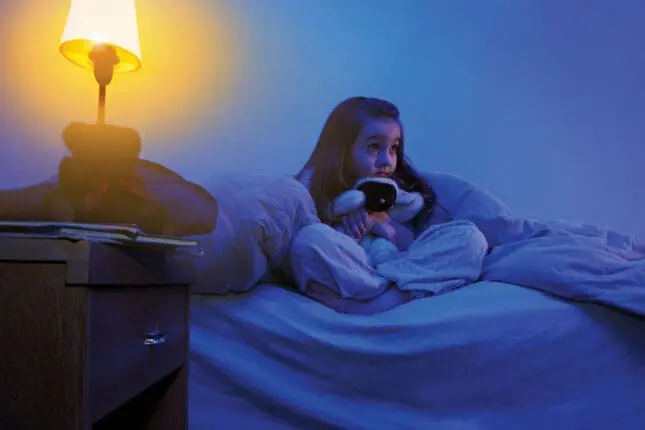Warm Southern California sunshine is streaming through the office window as my supervisee, Nina, and I discuss a case that has her stumped. Nina’s a year out of graduate school, earnest and smart, with an empathetic ear and the kind of bright smile that puts the kids she works with at ease. But now, as she leans back into the couch cushion, her mouth is tight and her brow furrowed. With a disheartened sigh, she tells me that she’s done all the “best things” she learned in her graduate program, but it’s become apparent that for the child she’s working with, not only aren’t these approaches working, they’re making matters worse.
“I’m so stuck,” she says. “The parents are implementing my suggestions, and things get better for a few days, but then the child regresses again. Yesterday they told me they wanted to look for a new therapist. I just don’t know where to go from here.”
Nina tells me about Gemela, a five-year-old kindergartener who has big brown eyes, a wide smile, and, as her parents tell it, a personality that’s been a challenge since birth. The parents feel ill-equipped to manage what they describe as Gemela’s intensity and insistence on always being in control. Their pediatrician eventually referred them to the mental health clinic where Nina works as a psychology intern, and they explained to the staff there that their primary concern is their daughter’s extreme difficulty falling asleep.
Every night, Gemela makes multiple requests for another story, complains about objects in her room that scare her, or begs repeatedly for a drink of water. After she finally falls asleep, Gemela routinely wakes up in the night crying, and needs help settling back to sleep. Often, the only solution is for the parents to bring her into their bed or lie beside her in hers, resulting in fitful sleep for all. After six months of this, her exhausted parents told the therapist they were “living on fumes” and wondering if parenting would always be this hard.
Rewards Aren’t Enough
When Nina explained that her plan for this family was to address the sleep issue using cognitive and behavioral techniques that focus on the “presenting problem,” I realized she was being taught to help children with emotional and regulatory challenges in much the same way I had been in graduate school decades earlier: you focus on the behavior, and address it with a cognitive and/or behavioral approach. It’s conventional wisdom within the field. But it needs changing.
Nina began her evaluation with an intake with the parents, followed by two play-based sessions during which she observed Gemela interacting with them. To gain additional information about her behaviors and overall development, she gave Gemela’s parents and teacher a few checklists to complete.
During a follow-up session with the parents, she discussed her findings, among them, that Gemela was meeting her major developmental milestones. As they discussed the sleep issue, Nina shared with them some of the standard tools of the trade. “What we recommend in this situation is to develop consistent expectations and interactions around sleep and the sleep routine. You might explain to Gemela that you’re going to have a new, fun way to help her sleep in her own room through the night,” suggested Nina. “You also might want to consider a battery-powered night light to keep on her nightstand, so the room won’t be too dark—and as a reminder that it’s okay to stay in bed.”
The plan also included a behavioral reinforcement component. Nina encouraged sticker charts, and her mother made one that she decorated with Gemela’s favorite unicorn theme. Every night that Gemela stayed in her room, she’d earn a new unicorn sticker. After five nights in a row, her parents told her, she’d get to choose a new toy at the local toy store.
Just a week later, her parents shared hopeful news with Nina: Gemela had managed to stay in her room for four nights in a row! They were ecstatic and, after four nights of good sleep themselves, felt optimistic and revived. Nina was encouraged and relieved that the techniques she suggested were working, and bathed in a sense of professional assurance that she’d done her job well. But her euphoria proved short-lived. The following week, Gemela’s kindergarten teacher alerted them that the girl had been falling asleep at her desk in class. Her parents also reported that the child seemed “out of it” and more tired than they could remember.
To investigate, her parents used a video monitor to check on their daughter throughout the night. They discovered that Gemela was waking up nightly, just as she had before the intervention. But instead of coming to their room, she’d hold the night light in one hand and the sticker chart in the other—fully awake. The child was white-knuckling it through the night, complying in order to earn her reward, and sleeping much less than before the intervention!
Helping Kids from the Bottom Up
What had happened? The plan had seemed like a solid one, in line with how most therapists have been trained to think about managing child behavior. Thirty years ago, it was how I was trained, too. We learned to use “top-down” approaches such as cognitive talk therapy and behavioral rewards and consequences like sticker charts. There were techniques like exposure, modeling, encouraging willpower and positive thinking, and bibliotherapy, where we’d read books to children about their specific challenge.
While these are powerful tools, and there wasn’t anything inherently wrong with these strategies, they’d often fallen short for me as well. And just as I had, my supervisee lacked training in any developmental framework that could provide a roadmap to “bottom-up” or “body-up” approaches that focus on the underpinnings of self-regulation: those essential developmental capacities that build self-calming abilities. Long favored by a narrow band of childhood providers, including infant mental health specialists and pediatric occupational therapists, these developmental and relationship-based approaches are essential to the work I now do with children.
I went searching for answers to top-down limitations in psychology a decade after earning my doctoral degree. I’d decided to specialize in infant mental health and study with two of the early pioneers in the field, Drs. Stanley Greenspan and Serena Wieder. Luckily for me, this tiny sub-specialty focused on the brain and body, including the nervous system’s role in emotional and behavioral regulation. After all, babies can’t tell you what’s on their mind: it’s their bodies that tell us what they need.
What I learned about how the nervous system impacts emotions and behaviors changed the way I practiced. With “bottom-up” or “body-up” interventions, we focused not on teaching or rewarding, but on helping strengthen a child’s emotional regulation through play-based interventions that involved the parents and was grounded in the concept of attuned, emotional coregulation between child and parent.
Greenspan and Wieder taught me that this is the way children develop the ability to calm themselves physiologically.
Brain and Body Both
Since emotional regulation and the intentional control of one’s emotions and behaviors is a deeply developmental process, I told Nina that she was likely using a top-down approach for a body-up challenge. Gemela didn’t have the foundational infrastructure of self-regulation that makes cognitive and thinking approaches accessible. Simply put, Nina aimed her approach at the end product—the behaviors—and not the developmental underpinnings causing the behavioral challenges. Gemela didn’t yet have the requisite foundation of self-regulation required to calm her body and mind so that she could settle and sleep. That’s why the little girl sat up at night waiting for the sun to rise.
Although my supervisee was bright and talented, like many colleagues she’d never been trained in the centrality of the nervous system, and the body–brain connection that’s the primary contributing factor in childhood behavioral and emotional challenges. She lacked training in a neurodevelopmental framework that would help her understand how body-up approaches set the groundwork for children to self-regulate. Of course, top-down approaches—helping children use their planning, thinking, and cognition to solve problems—are a hallmark of psychology and can be very effective when used within an appropriate developmental context. But understanding when it’s appropriate to impart them, especially with young children, is where we miss the mark.
Updating our Training
Whatever our clients’ age, our field needs to come to grips with adding a neurodevelopmental context that respects both cognitive development and physiological state to our work and interventions. When we continue to think about behaviors only in a reinforcement/consequence or cognitive-centric way, we’re living inside the brain–body split. That’s outdated. It’s not mind (rewards/thinking/consequences) over matter. It’s always brain and body. Always both.
I tried to help Nina conceptualize Gemela’s case as a determination between a top-down and bottom-up issue. I explained why I believed Gemela’s difficulty with sleeping resulted from a fundamental difficulty in regulating her body’s activated nervous system. It explained why she had difficulty going with the flow in general, and with sleep specifically. Focusing on the regulation of the physical body—what neuroscientist Stephen Porges calls physiological state regulation—is central to working with behavioral challenges in the body–brain context. It provides us the context to help children most effectively, and it helps us know where to target our efforts as clinicians and parents. If a child has a bottom-up challenge, we must use a bottom-up approach first, and not a top-down one.

ILLUSTRATION © PIXABAY/ ZWEED_N_ROLL
The reason my supervisee’s approach backfired was that she’d understood Gemela’s problem as a top-down, learned response, and not a central difficulty in the self-regulation of her emotions and behaviors. The answers came from helping Nina see that the first step wasn’t training Gemela to sleep through the night, but helping her parents better understand their daughter’s need for coregulation. The gateway was to nurture the sleep process through a compassionate lens of first meeting the physiological/emotional needs of a child, rather than focusing solely on the behavior itself. When we do this, the presenting problems often fall away naturally.
Nina implemented my approach of determining whether a child’s behaviors are primarily top-down or body-up, and concluded that indeed Gemela needed an integrated approach that started from the bottom up. She then helped the parents begin to notice the shifts in their daughter’s emotional regulation—and their own—and encouraged them to use their attuned relationship to appreciate her challenges as signals of a vulnerable and emerging regulatory system.
She helped Gemela’s parents look for signs in the child’s body that suggested shifts in regulation. Did her posture, facial expressions, tone of voice, gestures, and need to move suddenly change? Did she move from appearing calm to looking more agitated or preoccupied? When the focus on calmness or agitation became a guide, her parents also began to notice how often they were stressed out at the end of the day.
The main therapeutic portal for aiding this family was coregulation—helping the parents help Gemela to calm her body in the hours prior to sleep.
As they stopped using the sticker chart and the reinforcement schedule, and put into practice Nina’s insights, Gemela’s parents realized that she needed more from them emotionally. At Nina’s suggestion, they began to pick her up from daycare an hour earlier each day, using the extra time for joyful, playful interactions. In the evening, they began to wind down as a family with soft lighting and music in the background. They followed her lead in pretend play that revealed her hidden fears about separation and a vulnerable nervous system that needed more coregulation, not more incentives. They started to eat dinner together and created a soothing bedtime routine that was designed just for Gemela.
Thankfully, after several months, everyone was sleeping through the night. The parents put away the baby monitor, and Nina had a better understanding of the difference between top-down and body-up approaches.
A Challenge to the Field
What can we learn from this story? It reveals how our field doesn’t successfully distinguish between top-down and bottom-up behaviors, and why we need to understand that bottom-up, or body-up, approaches support a child’s ability to access the top-down supports, if they’re even necessary. We can remedy our reliance on top-down thinking and cognition, or simple behavioral management, by incorporating relational neuroscientific principles into our practices with children and families. We must also understand that emotional and behavioral control is an embodied, developmental, and most importantly, relational experience. We need to stop placing undue pressure on children to comply with our expectations before they’re developmentally ready.
I want to push this point even further. In recent years, autistic adults and neurodivergent advocates have been telling us that focusing on manipulating children’s surface behaviors through compliance-based behavioral approaches are unnatural and potentially harmful ways to treat autistic children. Many autistic advocates find the requirement to be compliant in order to earn a reward or social approval to be problematic. They report that it can lead children to mask their true feelings and pretend to be okay when inside they’re distressed and severely misunderstood. My call to the field is to listen to people who were themselves the recipients of such behavioral approaches, and then take it upon ourselves to question the appropriateness of these interventions. I call upon our professional associations to create an atmosphere where this difficult issue can be raised in open forums that can be led by autistic and neurodivergent persons, the true experts.
Ultimately, we must move beyond the simple focus on behaviors. Gemela’s case is a mild example compared to the many children on the autism spectrum I’ve observed being placed in “calm-down” rooms or given positive behavior charts to limit their challenging or non-neurotypical behaviors. Essentially, they are being rewarded for compliance, without regard for their individual differences and basic human need for social engagement.
Looking Underneath
What made the difference in this supervision story? Nina shifted her focus to the reasons underlying Gemela’s sleep issues. Instead of seeing the behavior as the target, she helped her parents discover the developmental challenges and individual differences that were fueling the behaviors.
I recently had a similar experience supporting the parents of Jamil, an inquisitive seven-year-old adopted from the foster care system by parents Mark and Russell. Unhappy with the way his school-success team was managing his behaviors, school administrators were on the verge of suspending Jamil for pushing and shoving his peers. Mark and Russell didn’t observe aggressive behaviors at home; in fact, they experienced the opposite, a little boy who loved to please them. But at school it was a different story, that of a child who struggled with behavioral challenges.
The behavior chart that the teacher used wasn’t working at all, and Jamil continued to get into tussles on the playground. I suggested that we ditch the chart and instead look at the reason he was so agitated, which seemed to be the stress on his nervous system as he struggled to adapt to a new school where he didn’t yet feel safe. I explained that in the light of this new approach, we could view Jamil’s behaviors as stemming from a lack of emotional and behavioral regulation and control. That was why the worrisome behaviors were only popping up at school.
It also didn’t surprise me that Jamil was targeted for suspension, because, as a Black boy, he was much more likely to receive that consequence than non-BIPOC children, due to the endemic implicit bias and racism in our culture.
My new plan? Rather than rewarding him with stickers, I encouraged the teacher and classroom aide to focus on emotional coregulation. They joined Jamil on the playground each day, to connect and sometimes kick around a soccer ball with him and other students. They also introduced him to several classmates who lived near him and turned out to be welcoming new friends. Over time, Jamil’s disruptive behaviors disappeared because they were no longer necessary. He finally felt safe in his body and mind.
I can recite a long list of case examples like Jamil’s and Gemela’s that I see regularly in my work. All of them underline the need to first do the foundational work of building the capacity for physiological state regulation which eventually leads to self-regulation. That can only be established through enduring, attuned relationships of joy and safety.
With this new understanding of the adaptive nature of behaviors, I’m hopeful that people like my supervisee Nina will be part of an emerging generation of therapists who, right out of the gate, will utilize the rich information available from relational neuroscience that can reduce suffering and enrich the lives of all children and their families.
As for us established therapists, we must strive to keep learning, and have the courage to explore paradigms that may not have been part of our graduate curriculums. If, like me, you find it slightly shocking that what’s being taught now looks the same as what you were taught then—my hope is that you’ll voice your concerns to your own training programs. Then, consider availing yourself of some continuing education that focuses on the physiological dimensions of our clients’—and our own—experiences.
Let’s bring the mind and body together in the practice of psychology. It’s high time.
PHOTO © GETTY IMAGES/DESIGN PICS/KELLY REDINGER
Mona Delahooke
Mona Delahooke, PhD, is a clinical psychologist empowering joyful, resilient parent-child relationships by translating neuroscience research into practical and compassionate tools and strategies. Learn more at her website.







